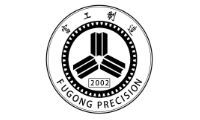The thermal stability and mechanical strength of carbide rollers depend first on the choice of materials. Generally speaking, cemented carbide with appropriate proportions of tungsten, cobalt and other elements will be selected. For example, in WC-Co cemented carbide, when the cobalt content is high, the toughness and bending strength of the alloy are better, and it can withstand the impact load during high-speed operation to a certain extent; and the appropriate increase in tungsten content helps to improve the hardness and thermal stability of the alloy, so that it can maintain good dimensional stability at high temperatures and is not easily deformed due to thermal expansion.
The manufacturing process is crucial to the performance of carbide rollers. In the powder metallurgy process, precise control of the particle size, purity, and process parameters of pressing and sintering of the powder is the key. Through isostatic pressing, the powder can be subjected to uniform pressure in all directions, thereby obtaining a green body with uniform density, reducing internal defects and improving mechanical strength. In the sintering stage, the use of appropriate sintering temperature and time can make the organizational structure of the cemented carbide more compact, enhance its bonding strength, and thus improve thermal stability and mechanical strength.
Surface treatment is an effective means to improve the thermal stability and mechanical strength of carbide rollers. For example, a wear-resistant and high-temperature-resistant coating, such as titanium nitride (TiN) and chromium nitride (CrN), is plated on the roller surface using physical vapor deposition (PVD) technology. These coatings not only have high hardness and low friction coefficient, which can reduce the friction between the roller and the contact material when the roller is running at high speed, reduce wear, but also play a heat-insulating role, slowing down the heat transfer into the roller, thereby improving thermal stability. At the same time, the coating can also enhance the corrosion resistance of the roller surface, prevent the surface from being oxidized or corroded by other chemicals, and ensure mechanical strength.
Reasonable structural design helps to improve the thermal stability and mechanical strength of carbide rollers when running at high speed. For example, the use of a hollow structure can reduce the weight of the roller, reduce centrifugal force, and reduce stress concentration caused by high-speed rotation. In addition, different materials or structural designs are used in the hub and rim of the roller, such as the hub part uses high-strength steel and the rim part uses cemented carbide. The two are combined together through a reasonable connection method, which can not only ensure the overall strength of the roller, but also give full play to the wear resistance and heat resistance of cemented carbide.
In order to ensure the thermal stability of carbide rollers, it is necessary to control the working environment temperature. A circulating cooling system can be used to circulate the coolant through cooling channels inside or around the rollers to take away the heat generated during high-speed operation and keep the roller temperature within a reasonable range. At the same time, attention should be paid to the ventilation and heat dissipation of the working environment to avoid excessive ambient temperature affecting the performance of the rollers.
Regular inspection and maintenance of carbide rollers is an important measure to ensure their thermal stability and mechanical strength. Through non-destructive testing techniques such as ultrasonic testing and magnetic particle testing, cracks and defects inside the rollers can be found in time so that they can be repaired or replaced before the problems worsen. In addition, the rollers should be cleaned and lubricated regularly, their surface wear should be checked, and the installation accuracy of the rollers should be adjusted in time to ensure that they are in good condition during high-speed operation.
Strict quality control should be implemented during the production and use of carbide rollers. Strict inspection and testing should be carried out at every stage from the procurement of raw materials to the manufacturing process to ensure that the products meet quality standards. During use, a reasonable service life and replacement cycle should be formulated based on the roller's usage and the manufacturer's recommendations to avoid safety accidents caused by a decrease in the roller's thermal stability and mechanical strength due to excessive use.

